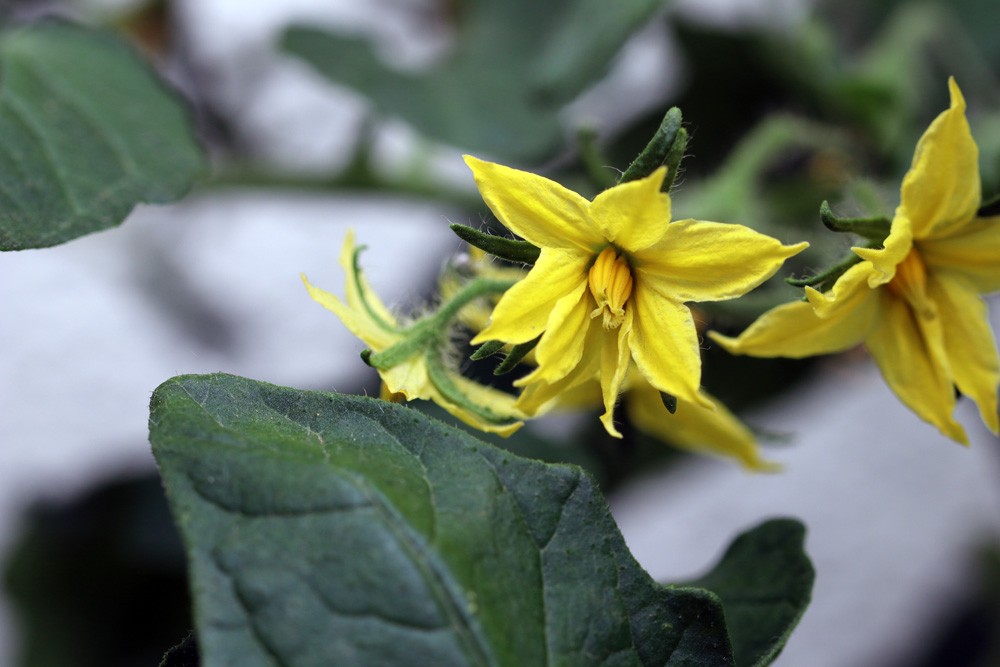Those who have successfully “grown up” their tomato plants, now waiting for flowers and fruits. Daily squinting and some wonder after some time: “When do tomatoes actually bloom?” or “Did I do something wrong?”. Later, questions arise such as, “How long does the flowering period go?” and “When are the tomatoes ripe?”. Patience is the only thing that helps with these issues.
It is impossible to say in general terms when tomatoes will begin to bloom. It depends very much on the variety, as well as the location and the weather. If the spring is cold, but the conditions inside are magnificent, flowering may already occur during the pre-breeding. However, without the necessary pollination, these flowers will eventually fall off.
It depends on:
- Variety
- Conditions
Also, if the plant was sown too early, flowers may already form before planting. On the other hand, if the weather is too cool and damp outside, development may be delayed. The same variety, in different locations and already one plant blooms earlier than the other. Diseased plants can also take longer.
Very roughly, it can be assumed that once the plant develops, it takes eight to twelve weeks for the first flowers to appear.
Duration of flowering
Again, weather, location, and cultivar provide a wide variety of flowering durations. Best conditions, early variety and only small fruit set will form after two weeks. Bad weather, little heat and light, or a slow variety provide periods of up to four weeks.
From flowering to harvest
If everything went smoothly and flowering began in June for popular varieties, such as resin fire, can be harvested from August. In all other cases, the amateur gardener must be patient. Nature has its own rules. But one thing is quite certain: if the plants do not suffer from extreme nutrient deficiency or a devastating disease, there will always be a small harvest.
Different ripening times
Many hobby growers regularly try out other varieties. Curiosity, fun with the potpourri of colors, shapes and enjoyment entice them to do so. It should be noted that the diversity of varieties results in different times from flowering to ripening. The fastest to harvest are the cherry tomatoes. They need about 65 days. Flesh tomatoes take up to 90 days. Now, it might be assumed that this is due to size. Roughly speaking, this is true. However, there are tomatoes that developed their ripening time through breeding or adaptation.
Very early: (June / July)
Golden Currant, Black Cherry, Earlina
Early: (July)
Rossol, Bloody Butcher
Medium: (July / August)
Bonner Best, Principe Borghese
Late: (August / September)
Panderosa Pink, Green Zebra
Very late: ( until October)
Pineapple tomato, Daniela
One year she suddenly means it mighty well and the hobby gardener gets difficulties with picking and consumption / the processing to hurry behind. The next year she annoys growers of the same latitude with the fact that it was late warm and then quickly becomes too cold again and the still green tomatoes do not make it to full maturity.
Long shelf life
In the first case, the fruits can be stored in a relatively cool, dark place, preferably with high humidity for up to two weeks without any problems. Just please do not store them in the refrigerator! Here they quickly lose their aroma.
Allow to ripen
For the other case, the fruits of the tomato plants can simply ripen. Some store them wrapped in newspaper, others hang the berries upside down on branches. Another option is to put them like the ripe fruit. Depending on what stage is the berry, it takes from a few days to two weeks until those are also ripe.


